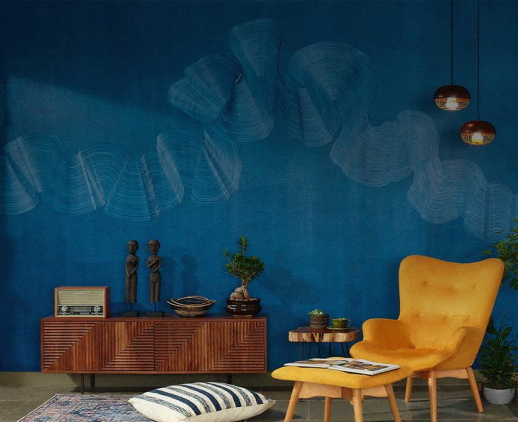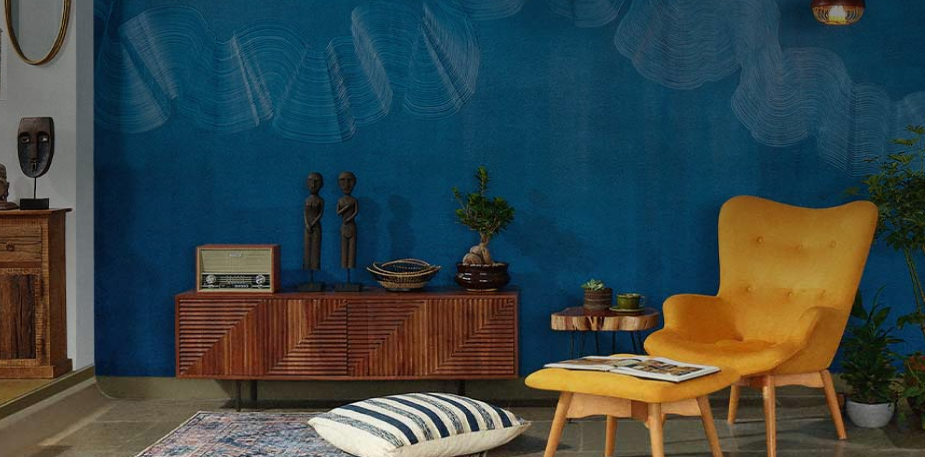Get your home interior design budget estimate
75 Names To Know In Indian Design: The City Sculptors

Our 75th Independence Day Special: Meet the men and women who have designed our cities and sculpted skylines
We continue our journey in the brief history of Indian design with some of the most illustrious names responsible for shaping the country’s metropolitan skylines, planning smart cities of the future as well as the real estate tycoons who are transforming the way we work, play and live.
Sheila Sri Prakash
At a time when Indian architecture was largely male-dominated and women in the field were often relegated as “interior designers”, Sheila Sri Prakash was able to break through to the forefront with a sizable mix of residential, industrial, civic, and hospitality projects. After graduating from Anna University, she became one of the first Indian women to start her Chennai-based firm, Shilpa Architects, in 1979.
A trained bharathantyam dancer, her striking designs reflect her artistic sensibilities and include several institutional projects such as the Madras Art House, Kuchipudi Art Academy, the upcoming Shirdi Sai Baba Temple as well as the restoration of the Brihadisvara Temple in Thanjavur.

Image courtesy, Shilpa Architects
An advocate for urban sustainability, she has worked with the World Economic Forum on the Reciprocal Design Index and currently works as an independent director and urban expert for the Chennai Smart City initiative.
Hafeez Contractor
Perhaps the most famous starchitect of our times, Hafeez Contractor has single-handedly sculpted the skylines of India’s mega-metropolises. A strong advocate for the “vertical growth” of cities, he has spent much of his career perfecting the modern skyscraper starting in Mumbai with the iconic buildings at Hiranandani Gardens in Powai to the soaring Imperial Towers in Tardeo. Founded in 1982, his firm is one of the largest in India with prestigious projects that range from state-sanctioned stadiums and airports to townships and business parks for real estate giants like DLF. In 2016, he was awarded the Padma Bhushan.
Noshir Talati
With a portfolio that spans over five decades, Noshir Talati is a Mumbai icon with countless interior and architecture projects ranging from education and healthcare to hospitality, residential and commercial spaces across the country and the Middle East. After training from the Rachana Sansad in Mumbai and the University of Michigan, Talati began his practice out of a simple 100-square-foot office and now boasts of over 300 employees. His streamlined designs with a focus on function over form include the immediately recognisable Ceejay House, Jindal Mansion and the Palais Royale in Mumbai.
Shashi Prabhu
Shashi Prabhu set up his firm in 1969 and quickly rose to the top with iconic projects like the Wankhede Stadium in 1972 and the Indira Gandhi Indoor Stadium in 1982. Prabhu believes that recreation and leisure are central to urban lifestyles and some of his best works include the refurbishment of famous Mumbai institutions like the Garware Club House, the Willingdon Sports Club and the MCA Recreation Centre.
From the early 1980s, he has also focused much of his practice on Mumbai’s healthcare infrastructure by designing state-of-the-art buildings such as the Lilavati hospital in Bandra, the Thane Municipal Hospital and the extension for the H.N. Reliance Foundation Hospital in Girgaon.
Prem Nath
Prem Nath has often said his rags to riches story is made for cinema—he dreamed of becoming a famous architect on construction sites where his mother worked as a daily wager in the early 1950s. He likens himself as the “Amitabh Bachchan” of architecture, but his work goes beyond creating celebrity homes on Juhu Beach and spans several iconic high-rises, IT Parks, residential townships malls and multiplexes. He is also credited for creating India’s first revolving restaurant at the Ambassador Hotel in Mumbai.

Image courtesy, Wikipedia
Hasmukh and Bimal Patel
Hasmukh Patel founded his firm in 1960 after studying at the MS University in Vadodara and Cornell University in New York and left behind a legacy of over 800 projects to his son Bimal Patel when he passed away in 2018. Some of Hasmukh’s most celebrated projects are in Ahmedabad like the Entrepreneurship Development Institute of India, which was nominated for the Aga Khan Award for Architecture in 1992, the Chinubhai Centre and Patang Hotel and Newman Hall hostel for St. Xavier’s Mission.
His son Bimal, who was awarded the Padma Shri in 2019, has since taken over the firm and is presently working on some of the largest projects in the country including the Parliament House and Central Vista Transformation in the capital, the Mumbai Port Complex, the Jaipur International Airport and the Vishwanath Dham in Varanasi.
Satish Gujral
Satish Gujral was only eight when he lost his hearing and was encouraged to pursue the arts by his father who enrolled him at the Mayo School of Art in Lahore. The artist, who passed away at the age of 94 in 2020, is known for portraits of some of the most famous leaders including Lala Lajpat Rai, Jawaharlal Nehru, Indira Gandhi and VK Krishna Menon as well as his his murals at the the Punjab Agricultural University, Delhi High Court, Shastri Bhawan and the World Trade Centre in New York. The Padma Vibhushan awardee worked across several artistic mediums and even took on architecture when he designed the striking Belgian Embassy in Delhi, for which he was honoured with the Belgian Order of the Crown.
Iftikhar M. Kadri
At 93, Iftikhar M. Kadri is amongst the oldest and most respected architects and civil engineers in India. With over 150 buildings across four countries to his credit, some of Kadri’s landmark projects include the Shivsagar Estate and Nehru Centre in Mumbai, Kowloon Mosque in Hong Kong, the Lake Palace Hotel in Udaipur, Kashmir University Projects in Srinagar, The Oberoi Bangalore, and the National Judicial Academy in Bhopal.

Image courtesy, IMK Architects

Image courtesy, Architectural Digest
Romi and Martand Khosla
Romi Khosla and his son Martand both trained at the Architectural Association in London and their firm Romi Khosla Design Studio is amongst the most recognised practices in Delhi. While Romi, who is now retired, is best known for designing the National Gallery of Modern Art in Mumbai, SEZ for Suzlon in Udupi and the Corporate Office of United Breweries in Bangalore; his son Martand is also a mixed-media artist known for his solo and group shows at galleries like Nature Morte in Delhi and GallerySkye in Bangalore.
Under Martand’s leadership, the firm’s projects range from eco-friendly mud architecture and low-cost housing to large-scale projects like the Indian Embassy in Uzbekistan, corporate interiors for Goldman Sachs and high-end private residences and villas.
Narayan and Prem Chandavarkar
Set up in 1947, CnT Architects is one of the earliest family-run practices in Bangalore— founded by Narayan Chandavakar and his wife Tara, it is currently led by their son Prem. The firm’s history goes back to creating the earliest corporate buildings like the HMT campus in Hyderabad as well as IT parks like the first Infosys Campus in Bangalore. At present, Prem, who also has also served as the former Executive Director of the Srishti Institute of Art Design & Technology in Bangalore, is working on the Sai Life Sciences Campus in Hyderabad as well as the IIM in Tiruchirappalli.
Manit and Sonali Rastogi
Established in 1996, Manit and Sonali Rastogi’s firm, Morphogenesis takes on some of the most ambitious hospitality projects for brands like Taj, ITC, Marriott, Hilton, Radisson, and a number of boutique properties across India. The husband-wife team’s avant-garde sensibilities and a commitment to sustainability also extend to the many institutional projects such as the Pearl Academy in Jaipur, where a façade featuring jaalis and a roof made up of inverted earthen pots helps regulate temperature and sunlight.
The couple were in their early 20s when they met at the School of Planning and Architecture in Delhi in the late 1980s and received their masters at Architectural Association in London.

Image courtesy, Andre Fanthome
With a background in sustainable environmental design, urban housing and Artificial Intelligence (AI) in architecture, they take on a host of large-scale projects like the Infosys Campus in Nagpur that’s designed to be “net zero on energy, water and waste to landfill". Earlier this year, it was reported that the firm’s real estate arm will invest 100 crores to develop commercial spaces in Okhla.

Bodhgaya temple by SJK Architects
Shimul Javeri Kadri
When Shimul Javeri Kadri set up her Mumbai-based practice in 1990, there was an influx of glass-and-aluminium structures across all the big cities in the country. Against all odds, Kadri decided to focus on the climate and resource-driven traditional architecture instead. Her projects, both past and present, are driven by a passion for sustainability and rely heavily on ancient Indian culture and customs.
For instance, at Marasa Sarovar Premiere Hotel in Tirupati, Kadri interpreted the dashavataras or the 10 avatars of Lord Vishnu while the Jain Heritage Museum in Gujarat features a lime-plastered exterior with glass jharokhas.
For the Hotel at Bodh Gaya in Bihar, Kadri worked almost exclusively with bricks to create arches and vaults as a tribute to the nearly two millennia-old brick-making practices of the region.
Gurjit Singh Matharoo
Gurjit Singh Matharoo is a man of many talents and passions. Thanks in part to his illustrious family background—his great-grandfather worked as a draftsperson for the British while his father was a structural designer. A proper gearhead, he enjoys working on cars and motorbikes just as much as his streamlined and restrained architectural style. After graduating from CEPT, he founded the Ahmedabad-based firm Matharoo Associates in 1991 and many of his projects are reminiscent of works by Le Corbusier, Charles Correa and B.V. Doshi. For public institutions such as the Prathama Blood Bank at Ahmedabad, Matharoo often makes use of natural exposed materials like concrete for low-cost, sustainable, and weather-resistant solutions.

Image courtesy, Inhabitat

Image courtesy, Sanjay Puri Architects
Sanjay Puri
Like many architects, Sanjay Puri says he was inspired by Ayn Rand’s The Fountainhead when he was in boarding school in Mayo College, Ajmer. An apprenticeship at Hafeez Contractor’s offices led Puri to a full-time position as an associate with Contractor’s firm right after graduation from the Academy of Architecture, Mumbai in the 1980s. By 1992, he was ready to set up his firm when he was offered a chance to create a 54-acre township called Vasant Nagri in Vasai. A spate of residential projects and townships followed and haven’t stopped since, although Puri’s heart rests in the more avant-garde and sculptural projects like the Bombay Arts Society building in Bandra.
Puri also believes his forte lies in energy-efficient practices to promote sustainability.
For instance, at a recently completed private home in Bhilwara, Rajasthan, Puri and his team have worked almost exclusively with locally sourced bricks, sandstone and lime plaster and created systems for rainwater harvesting and installed solar panels in response to the extreme desert climate and terrain.
Bijoy Ramachandran and Sunitha Kondur
Founded in 2003 by Bijoy Ramchandran and Sunitha Kondur, Hundredhands is a multi-disciplinary architecture and interior design firm based in Bangalore. From institutional buildings to corporate campuses, the studio firmly believes in providing green solutions, working with indigenous materials, and employing local craftspeople. For instance, the Bangalore International Centre for arts and culture has a built-in sewage treatment plant and groundwater recharge facilities. Another recent project is the Go Native store and eatery in Bangalore – a fully repurposed site of an old, abandoned factory with minimal intervention.

Image courtesy, Suryan and Dang
Apart from urban planning and architecture, Ramachandran also dabbles in filmmaking. In 2008, he produced a documentary, directed by his brother Premjit, on the Pritzker Prize winner and iconic architect B.V. Doshi, whom he interned with way back in 1995.

Image courtesy, Archdaily
Soumitro Ghosh and Nisha Mathew
Architects Soumitro Ghosh and Nisha Mathew formed Mathew and Ghosh Architects in 1995 and have since worked on a number of large-scale public and private projects in Bangalore like the Freedom Park on the site of the Old Central Jail, National Martyrs Memorial, the Max Mueller Bhavan, the Goethe Institut and the Bethel Baptist Church.
They’ve also worked on the massive 65,000-sq-ft microbrewery, bar and restaurant— the Byg Brewski—inspired by the Colosseum in Rome and built using old Mangalore tiles, stones and boulders from the site and its immediate surroundings.
The duo spends much of their time researching sustainable practices with a special focus on optimising natural light, green cover and ventilation as seen in the House of Stories, a private residence with floors made in concrete, cleverly designed louvers for ventilation, slits for skylights and a provision for rainwater collection on the roof.
P.K. Venkataramanan
P.K. Venkataramanan set up one of Bangalore's oldest architectural firms in 1969 with an early focus on planning and building some of the country’s earliest research & development facilities, public and institutional buildings like the iconic library at the Raman Research Institute, made in the modernist style of 1970s with an exposed concrete façade. By the 1990s, his son Naresh Narasimhan joined the business just in time for Bangalore’s IT boom. Some of their biggest projects in Bangalore include the first-ever Infosys software park, the Wipro SEZ, the GE John F Welch Technology Centre for R&D as well as the upcoming Boeing campus and a large research facility for Siemens.

Image courtesy, Venkataraman Associates
Abin Chaudhuri
Abin Chaudhuri set up his practice in Kolkata in the early 2000s after earning an architecture degree from Jadavpur University and studying industrial design at the Domus Academy in Milan. His firm dabbles in diverse projects ranging from the International Management Institute in Bhubaneshwar and the Kolkata Partition Museum to the headquarters of Bandhan Bank’s headquarters in New Town, Kolkata and The Sanctuary, a luxurious residential project designed between two golf courses.
Chaudhuri grew up in Bansberia, just outside Kolkata, and has since returned to the suburban township for some of his most inspired work like the Gallery House, a multipurpose community centre built for the locals in rust-red terracotta bricks inspired by the burnt brickwork of 200-year-old Ananta Basudeva temple nearby. Traditional Bengali architectural forms and techniques of West Bengal mostly uses brick and timber.
Alfaz Miller
A graduate of the Sir JJ College of Architecture, Alfaz Miller honed his skills working for Mumbai veterans T. Khareghat and Dilawar Noorani. Miller got his big break in 1989 when he was commissioned to restore the ANZ Grindlay’s heritage office in Fort, Mumbai. Some of his bigger interior design projects include designing lounges at the Chhatrapati Shivaji Maharaj Airport in Mumbai and the Kempegowda International Airport in Bengaluru, hotels for Taj and Marriott across the country as well as private offices for industrialists like Ratan Tata. He presently works with his daughter Aahana and he’s married to artist Brinda Miller.
Rajeev Sethi
Rajeev Sethi is a self-styled scenographer, but his legacy goes far beyond into the realms of design thinking, art and craft activism and preservation, interior design, and art curation. An icon among icons, Sethi has been mentored by the likes of S.W. Hayter, Ray and Charles Eames, Pierre Cardin, Pupul Jayakar, Kamaladevi Chattopadhyay, and Habib Tanvir. A Padma Bhushan awardee, Sethi has spent much of his life advocating for craftspeople and advising the central government on welfare of cottage industries.
His biggest project to date is the curation and creation of “Jaya He” museum at the T2 terminal at Mumbai’s Chhatrapati Shivaji Maharaj International Airport – a whirlwind showcase of over 7,000 art objects, including antiques procured from 27 states as well over 100 commissioned contemporary art works.

Image courtesy, Opolis
Rahul Gore and Sonal Sancheti
The Bihar Museum in Patna is arguably the most well-planned and meticulously executed public institution of our times. At 2.5 lakh sq-ft, it’s also been the largest undertaking for Rahul Gore and Sonal Sancheti of _OPOLIS, a Mumbai-based a multidisciplinary design practice. Both graduates of CEPT, Ahmedabad, the partners worked on the museum in collaboration with their mentor, the Japanese Pritzker Prize-winning architect Fumihiko Maki and have recently also won competitions for the construction of the Amaravati Capital Complex and an extension to the Bhau Daji Lad Museum in Mumbai.
Sandeep Khosla and Amaresh Anand
Over the years, Sandeep Khosla and Amaresh Anand have set a decidedly stylish and slick tone for their “Modern India” sensibilities – from the dark and sexy interiors of Shiro and the Hard Rock Café in the Bombay Dyeing compound in the early 2000s and high-energy, quirky interiors for young offices like MTV to sophisticated retail spaces for brands like Good Earth and hotel chains like The Park Hotels. Their turnkey projects are always a result of studying global fashion, lifestyle and design trends and they often lead to a unique “au courant” style that’s later replicated across a spectrum of hospitality projects across the country.

Image courtesy, Khosla Associates
The Brand Builders, our next installment in this special series will be published soon.

Get Started with your interior design journey with us!
Speak to our design professionals
What’s the status of your home possession?
What’s the condition of your home/space?
Will you be living in your space during the renovation?
 Previous Question
Previous Question
Is your interior design budget over 4 lakhs?
 Previous Question
Previous Question
Book next available appointment slots with our experts!
Please Select Date and Day
 Previous Question
Previous Question

Something went wrong!
We were unable to receive your details. Please try submitting them again.

Appointment Scheduled!
Thank you for giving an opportunity to Asian Paints Beautiful Homes Service! Our Customer Experience Specialist will get in touch with you soon.
Appointment Date & time
Thank You!
Our team will contact you for further details.
What’s the status of your home possession?
What’s the condition of your home/space?
Will you be living in your space during the renovation ?
 Previous Question
Previous Question
Is your interior design budget over 4 lakhs?
 Previous Question
Previous Question
Book next available appointment slots with our experts!
DEC 2023
Please Select Date and Day
 Previous Question
Previous Question

Something went wrong!
We were unable to receive your details. Please try submitting them again.

Appointment Scheduled!
Thank you for giving an opportunity to Asian Paints Beautiful Homes Service! Our Customer Experience Specialist will get in touch with you soon.
Appointment Date & time
17 Oct 23, 03.00PM - 04.00PM





































